In the circuit shown in figure ,(ε)1=3V,(ε)2=2V,(ε)3=1Vandr1=r2=r3=1(Ω).Find the potential difference between the points A and B and the current through each branch.
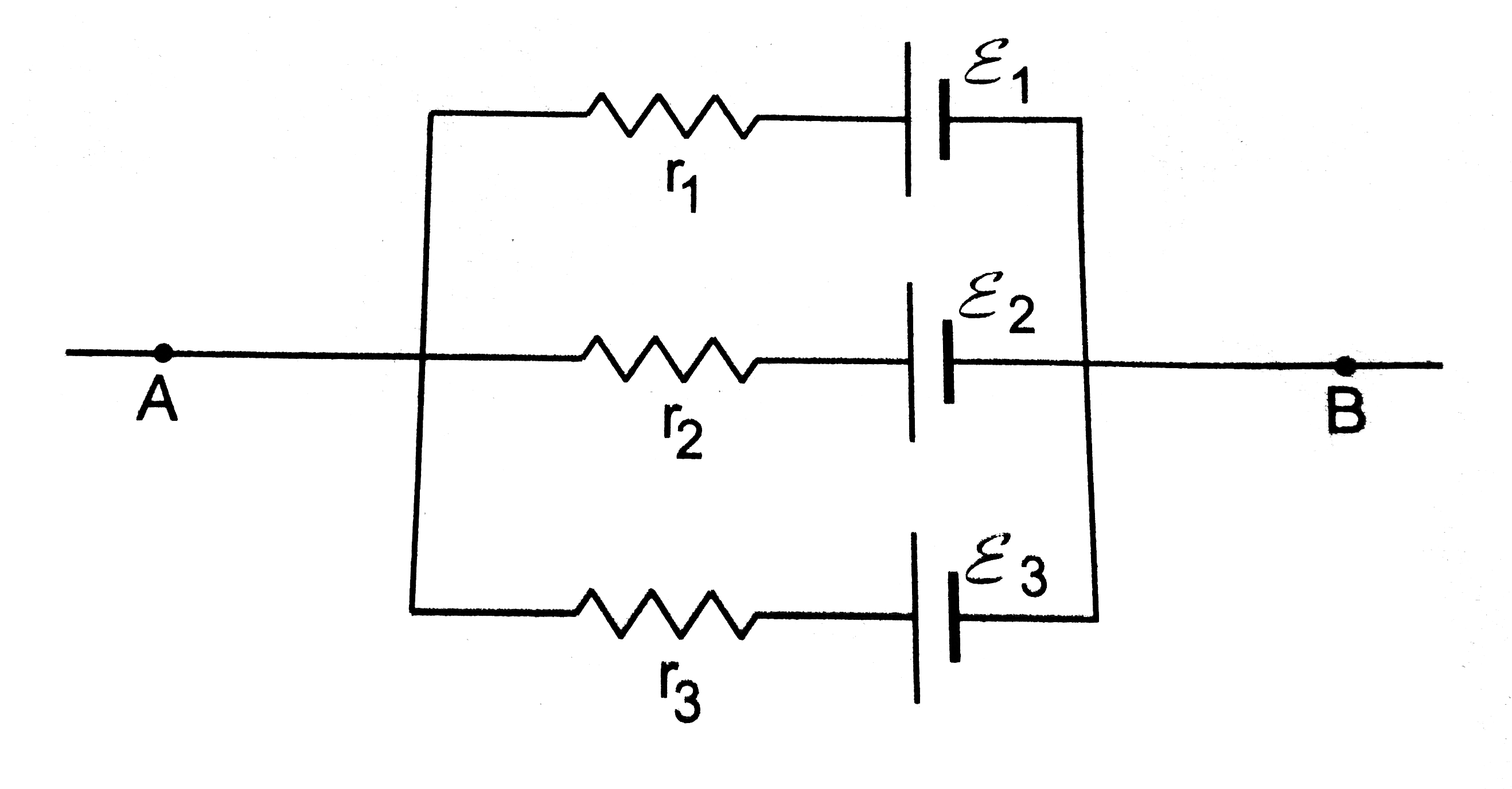 Solution in Tamil
Solution in Tamil
In circuit ABDCA
i+2−3+i=0
⇒i+i1−1=0
In circuit CFEDC
(i−i1)−1−3−I=0
2i−(i1)−2=0
i+ (i_1) = 1<br> 2i - (i_1) = 2 <br> Adding now, 3i = 3 rArr i = 1A <br> i_1 = 1-I = 0A <br> i-i_1 = 1-0 = 1A <br>Potentiald⇔erencebetweenA&B<br> = e-ir = 3-1.1 =2V.
Topper's Solved these Questions
- BOOK - HC VERMACHAPTER - ELECTRIC CURRENT IN CONDUCTORSEXERCISE - objective 29videos
ELECTRIC CURRENT IN CONDUCTORS
- BOOK - HC VERMACHAPTER - DISPERSION AND SPECTRAEXERCISE - Exercises11videos
DISPERSION AND SPECTRA
- BOOK - HC VERMACHAPTER - ELECTRIC CURRENT THROUGH GASESEXERCISE - Exercise23videos
ELECTRIC CURRENT THROUGH GASES
Similar Questions
Electrons are emitted by a hot filament and are accelerated by an electric field as shown in figure .The two stops at the left ensure that the electron beam has a uniform cross-section.
 06:19View Solution
06:19View SolutionA flint glass prism and a crown glass prism are to be combined in such a way that the deviation of the mean ray is zero. The refractive index of flint and crown glasses for the mean ray are 1.620 and 1.518 respectively. If the refracting angle of the flint prism is 6.0∘, what would be the refracting angle of the crown prism ?
04:19View SolutionA discharge tube contains helium at a low pressure. A large potential difference is applied across the tube. Consider a helium atom that has just been ionized due to the detachment of an atomic electron. Find the ratio of the distance travelled by the free electron to that by the positive ion in a short time dt after the ionization.
03:14View Solution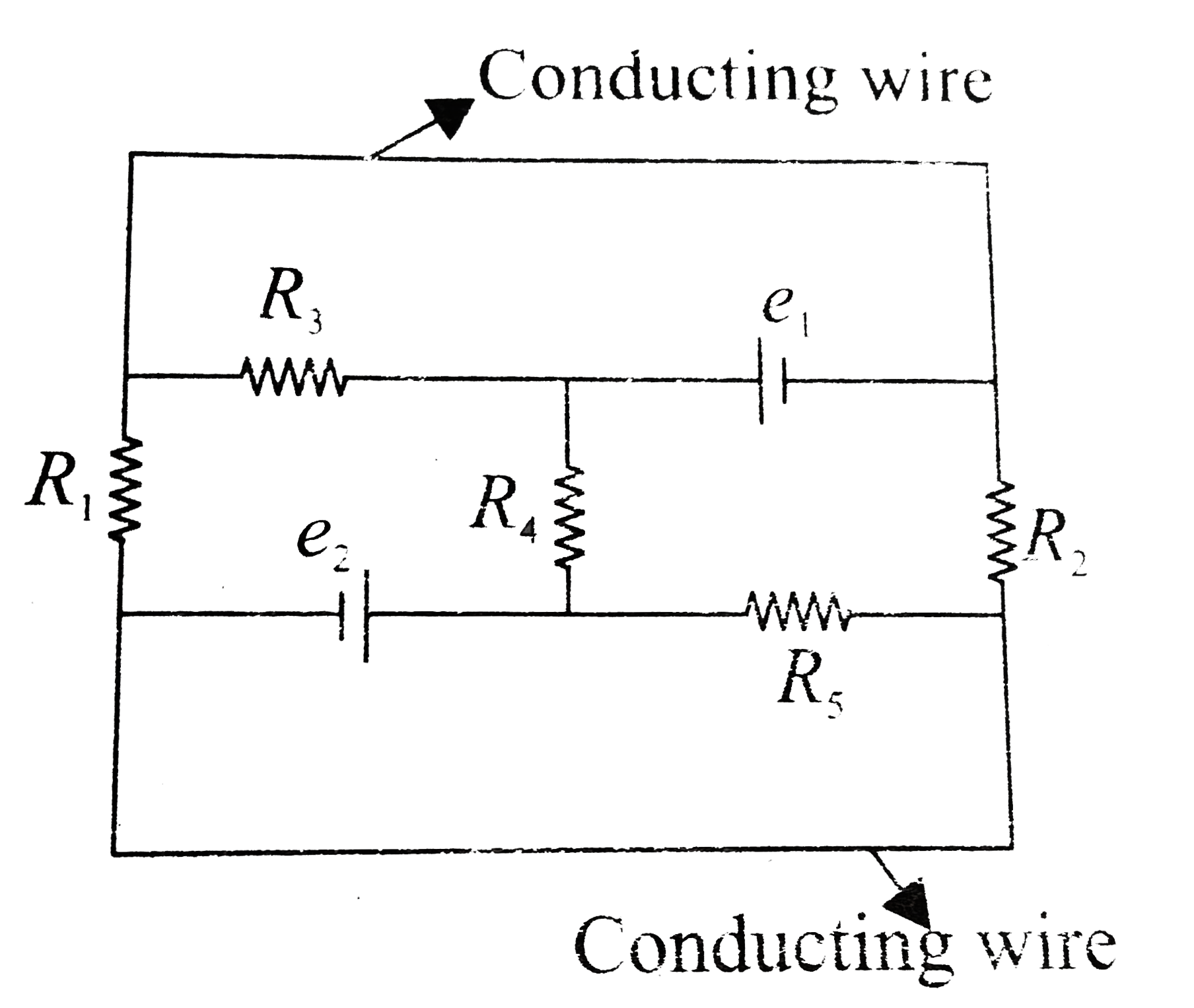
In the given cirucit, determine current through branch having indicated resistor R4 Given R1=R2=4Ω,R3=R4
R5=2Ωε1=5V,ε2=10V07:27View SolutionIn the network shown the potential difference between A and B is (R = r_(1) = r_(2) = r_(3) = 1 Omega, E_(1) = 3V, E_(2) = 2V, E_(3) = 1V )
02:43View SolutionFind the current flowing through the resistance R1 of the circuit shown in Fig. If the resistances are equal to R1=10Ω.R2=20Ω and R3=30Ω, and the potential of points 1,2 and 3 are equal to φ1=10V,φ2=6V, and φ3=5V
 03:57View Solution
03:57View Solution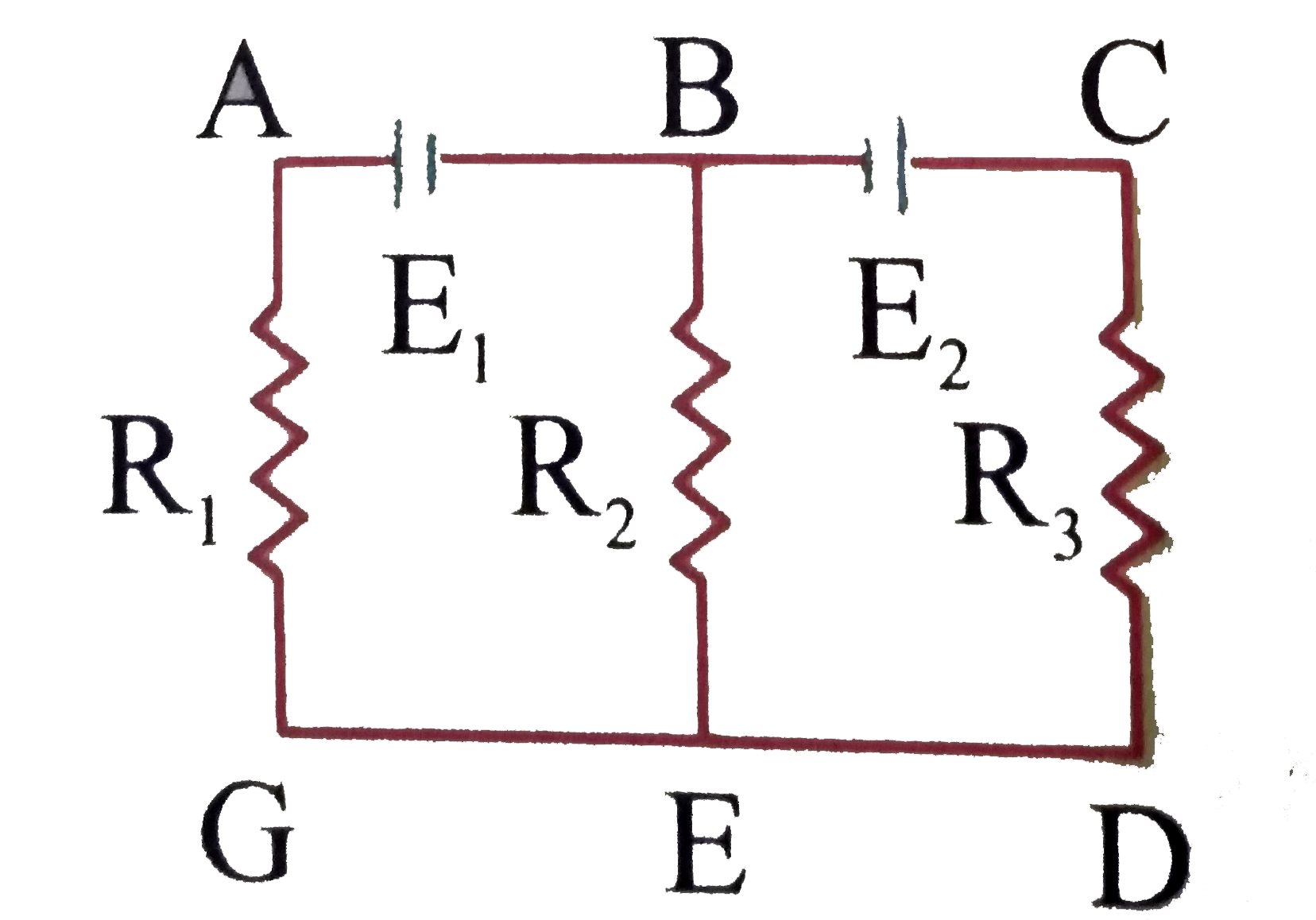
In the given circuit values are as follows
ε=2V,ε2=4V,R1=1Ω and R2=R3=1Ω.
Calculate the current through R1,R2 and R307:18View SolutionIn the circuit shown in the figure R_(1) =3 Omega,R_(2) = 2 Omega and R_(3) = 5 Omega Emf of the cell epsilon = 6 Volt. (a) Infinitely many 1 Omega resistors are added in parallel to R_(1) and R_(2) . Find current through R_(2) and potential drop across it. (b) Infinitely many 1 Omega resistors are added in series to R_(3) . Find the potential drop across R_(3) and current through it.
05:57View SolutionIn the circuit as shown in figure, E_(1)=2V , E_(2)=2V, E_(3)=1V, and R=r_(1)=r_(2)=r_(3)Omega . The potential difference between points A and B will be
02:05View Solutionदर्शाए गए परिपथ में R1=4Ω,R2=R3=5Ω,R4=10Ω तथा ε=6V परिपथ का तुल्य प्रतिरोध तथा प्रत्येक प्रतिरोधक में बहने वाली धारा के मान परिकलित कीजिए।
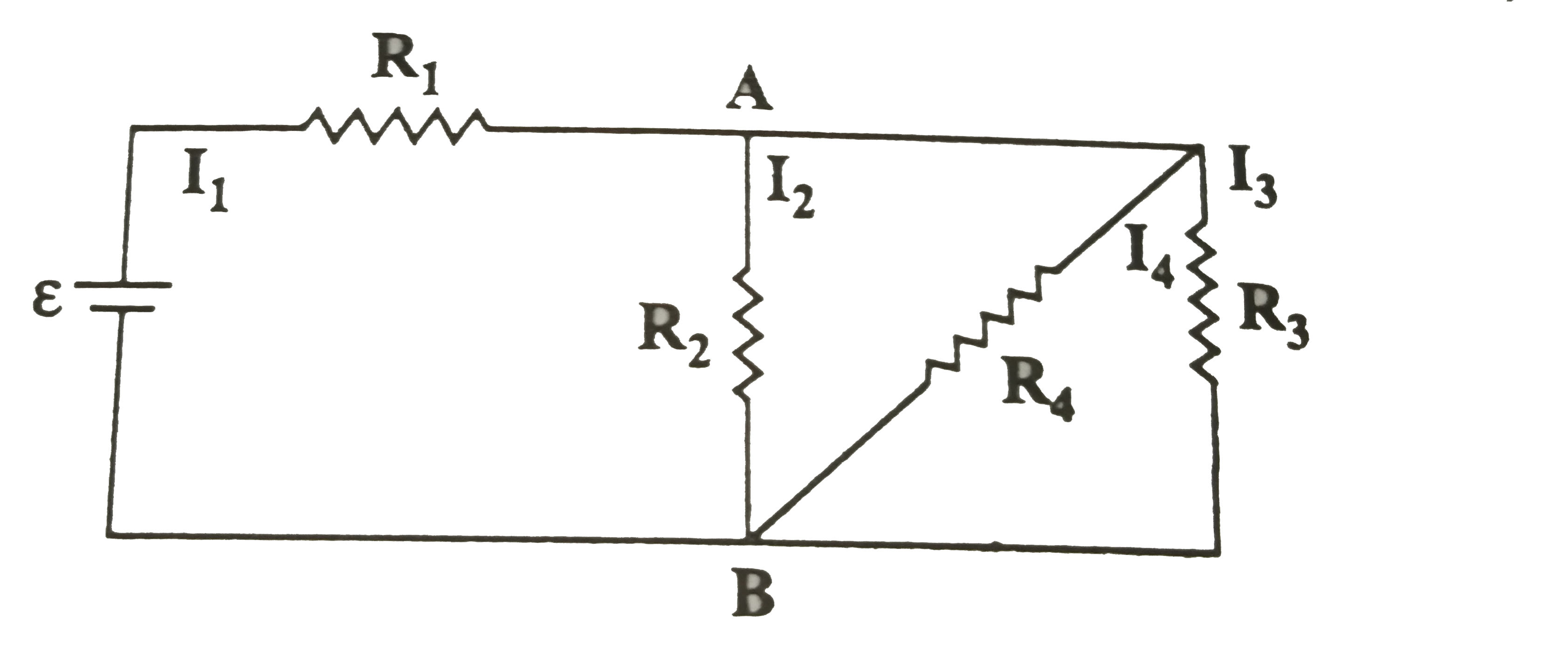 07:36View Solution
07:36View Solutionदिए गए परिपथ में प्रतिरोध R1 के सिरों पर वोल्टता पात ज्ञात कीजिए, जहाँ ε=60V,R1=18Ω,R2=10Ω,R3=5Ω तथा R4=10Ω
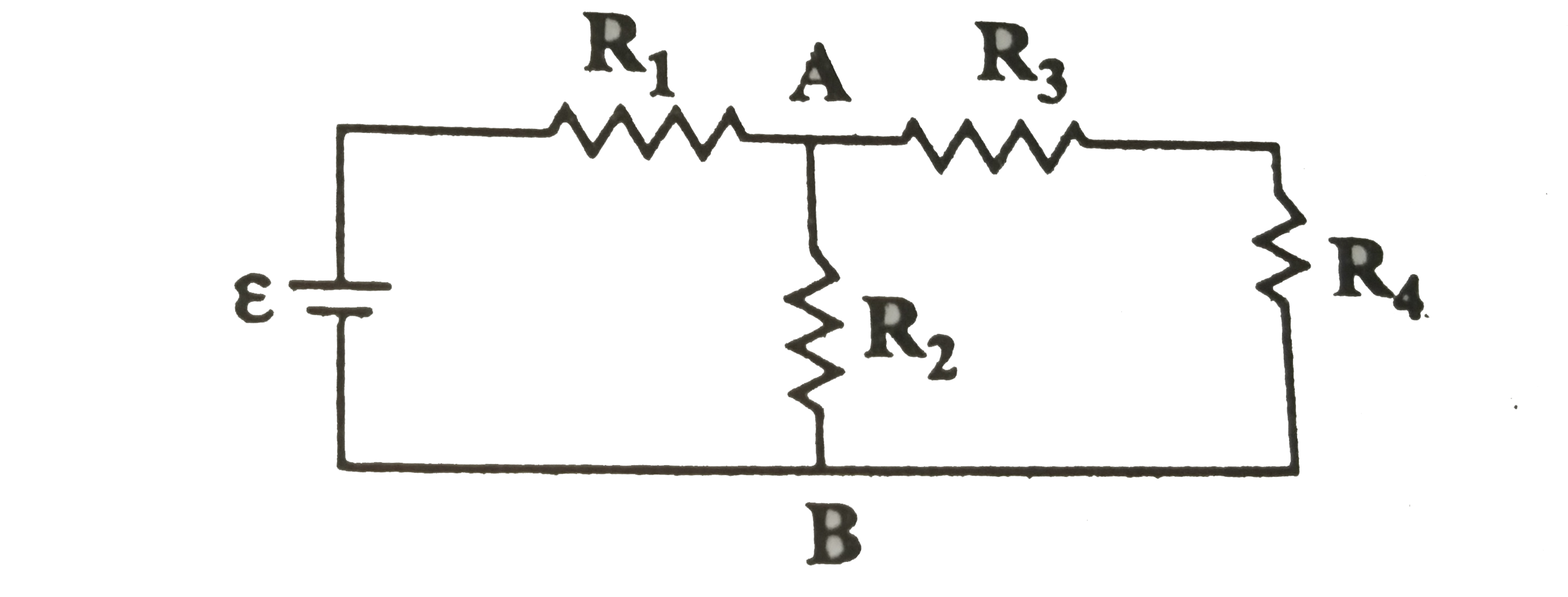 02:56View Solution
02:56View SolutionIn the network shown the potential difference between A and B is R(=r_(1)=r_(2)=r_(3)=1Omega,E_(1)=3V,E_(2)=2V,E_(3)=1V)
09:22View SolutionIn the circuit shown in fig. E1=3 volt,E2=2 volt,E3=1 vole and R=r1=r2=r3=1ohm.
(i) Find potential difference in Volt between the points A and B with A & B unconnected.
(ii) If r2 is short circuited and the point A is coneted to point B through a zero resistance wire, find the current through R in ampere.
 View Solution
View SolutionIn the circuit shown in figure ,(ε)1=3V,(ε)2=2V,(ε)3=1Vandr1=r2=r3=1(Ω).Find the potential difference between the points A and B and the current through each branch.
 View Solution
View SolutionIn the circuit shown in figure, ε1= 3 V, ε2=2V,ε3=IV and R=r1=r2=r3=1Ω .
The current through each branch is...... and potential difference between the points A and B is .......
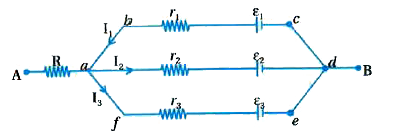 08:17View Solution
08:17View SolutionIn the circuit shown in fig. E1=3V,E2=2V,E3=1V,R=r1=r2=r3=1ohm. Find the potential difference between the points A and B and the currents through each branch.
 02:53View Solution
02:53View Solution

